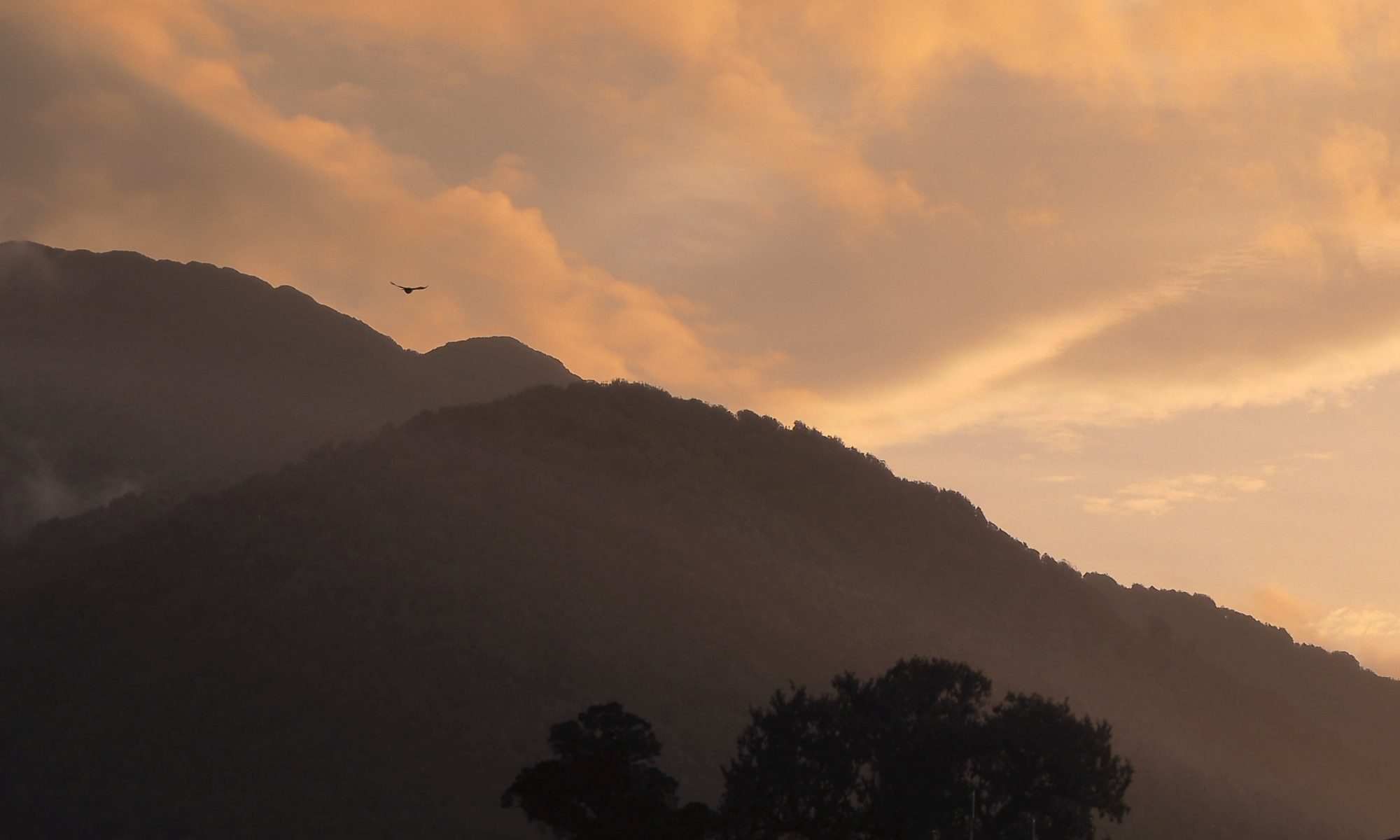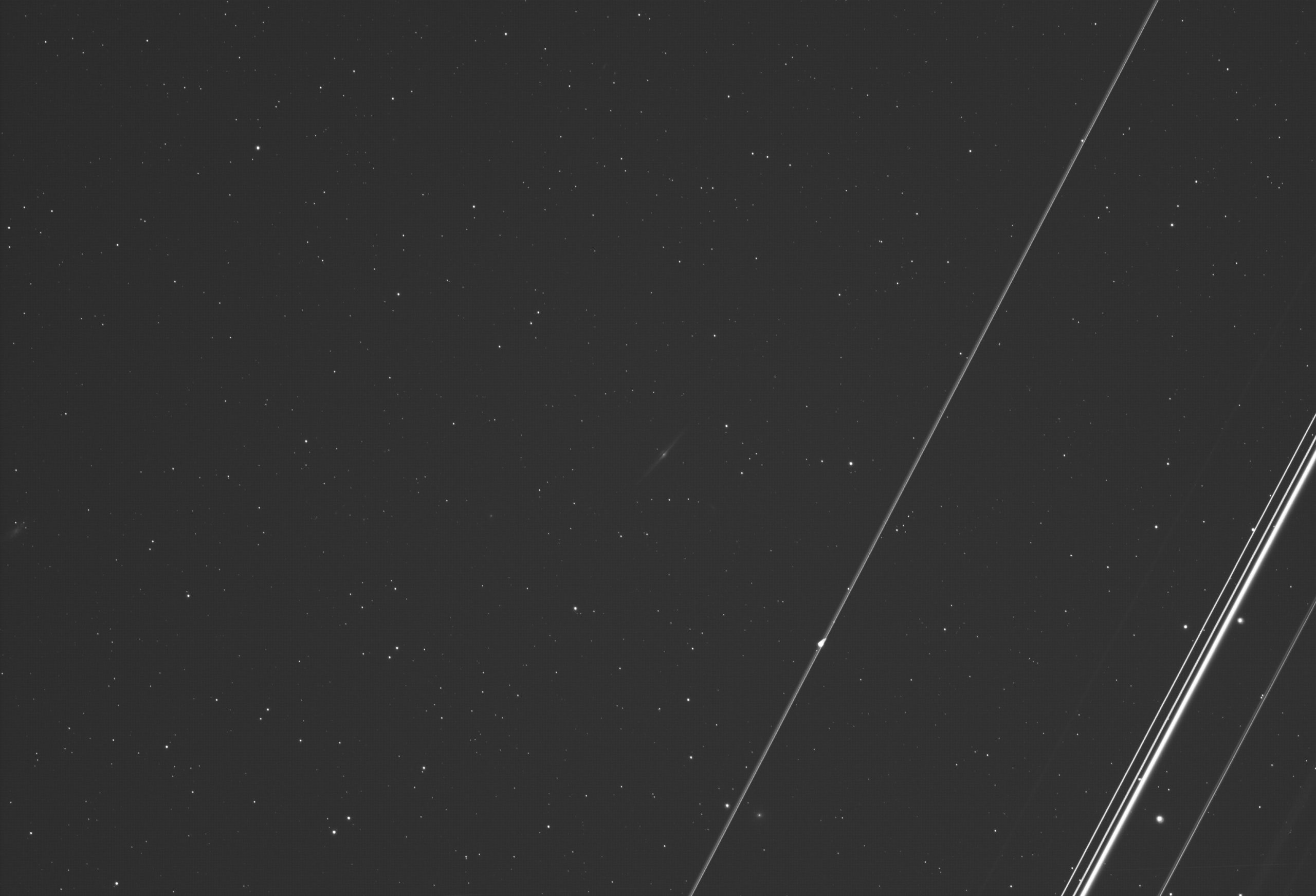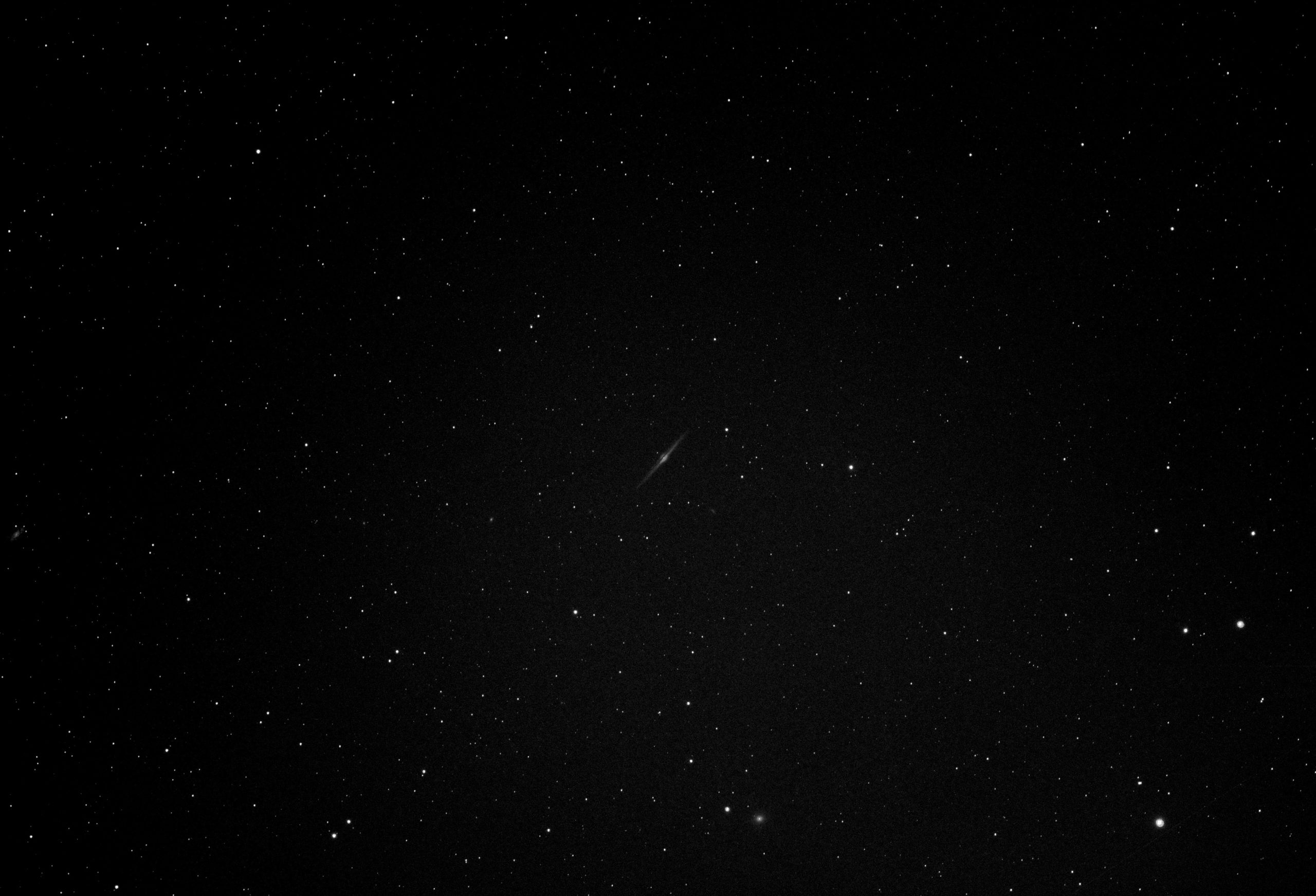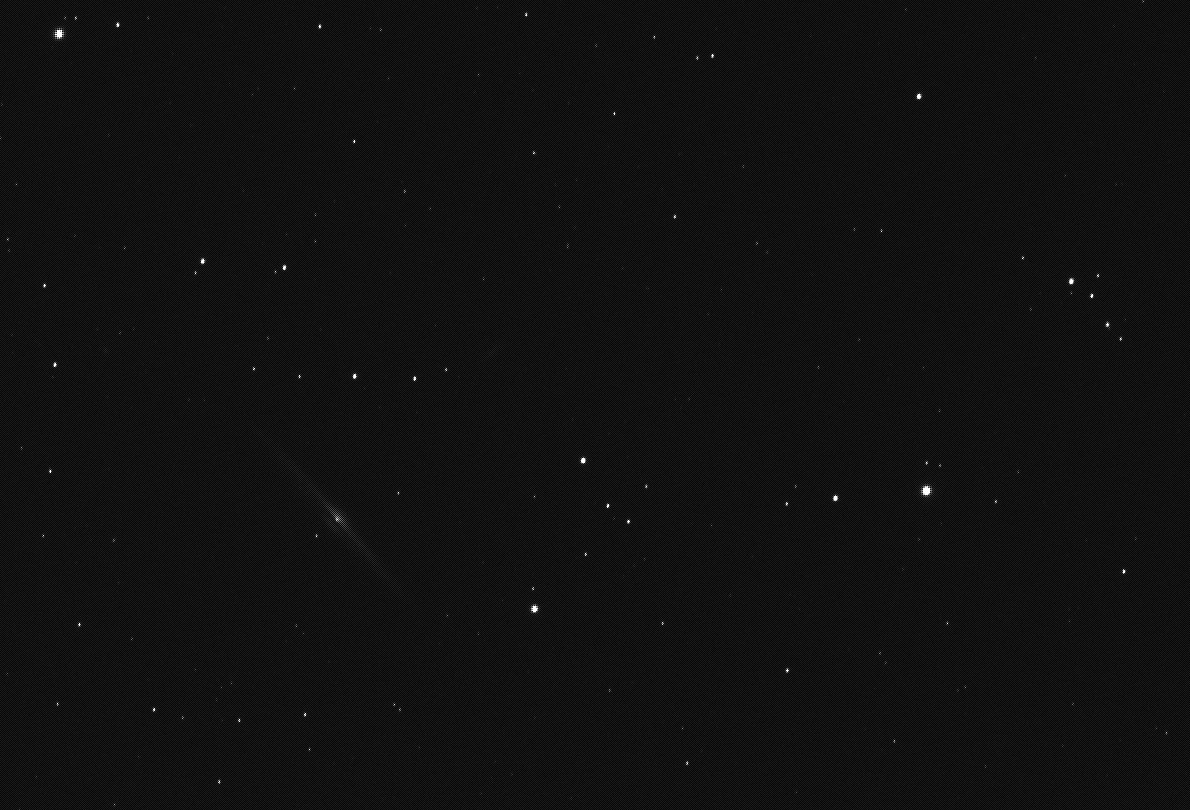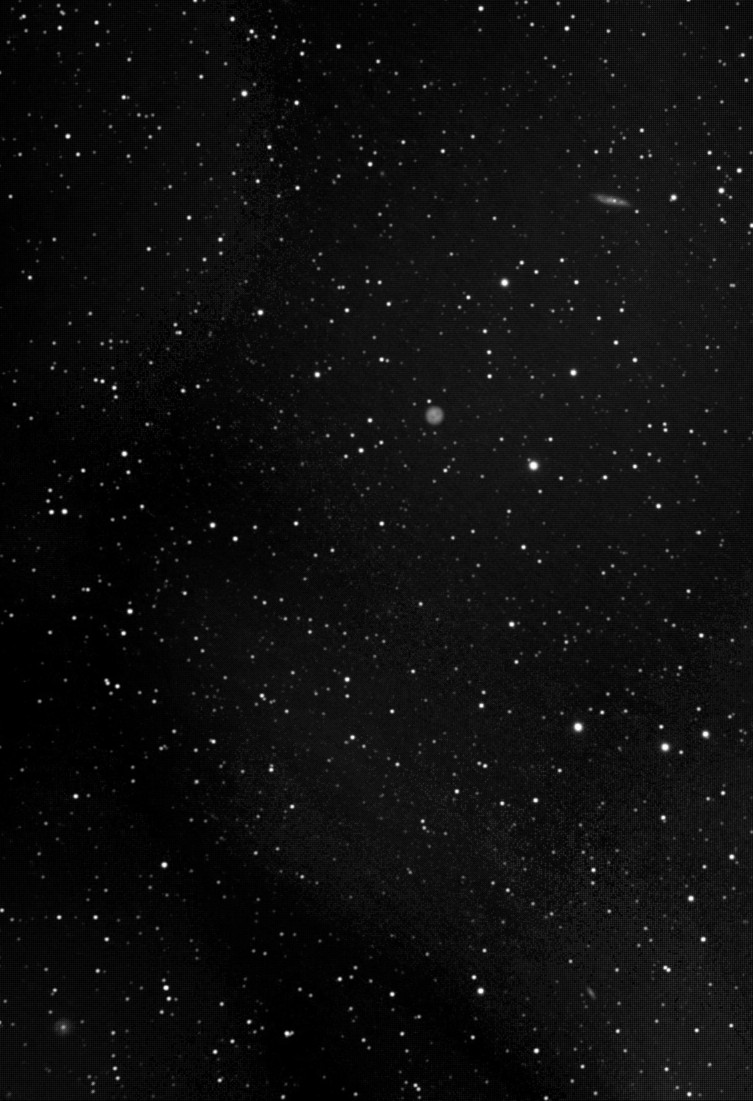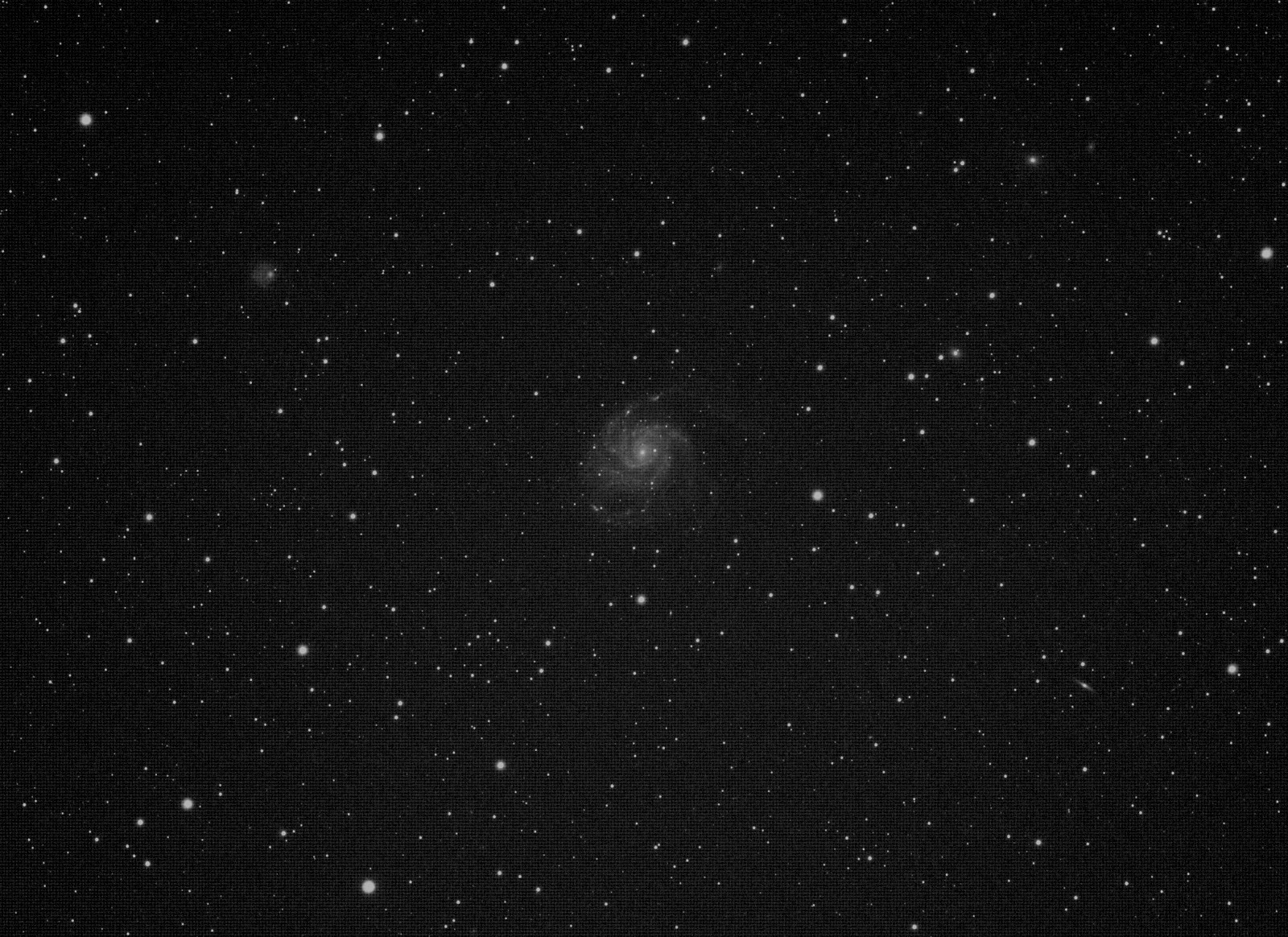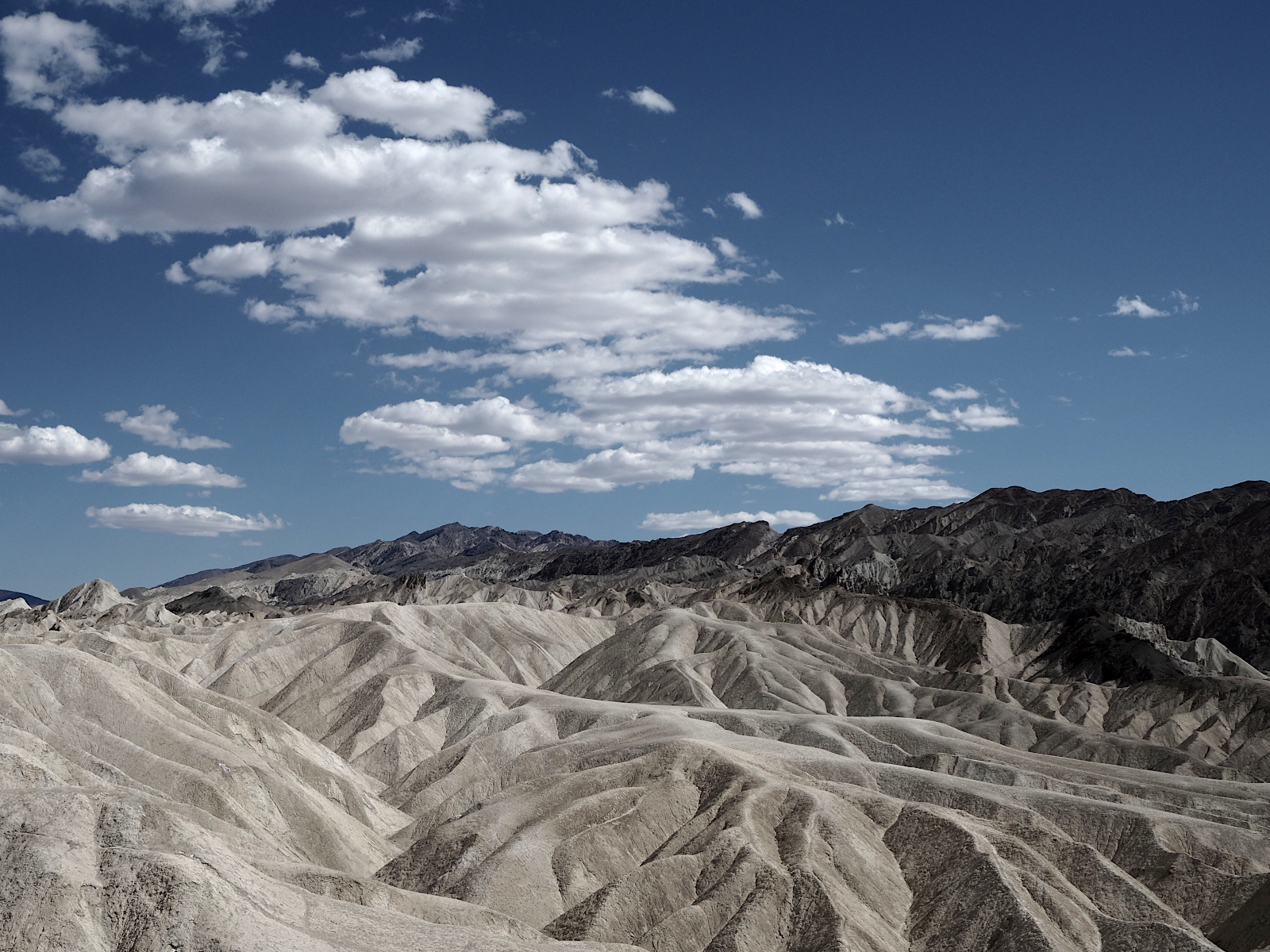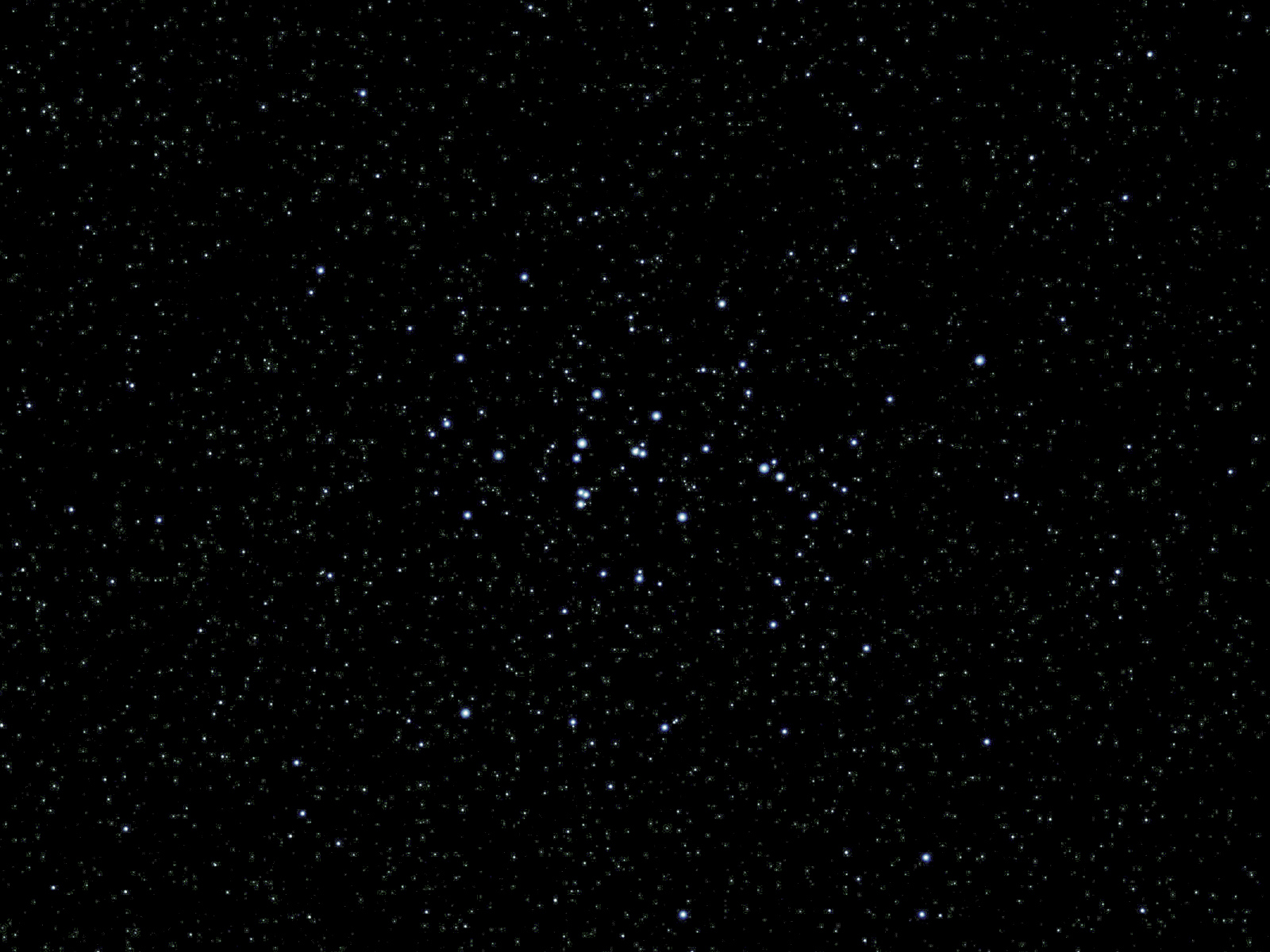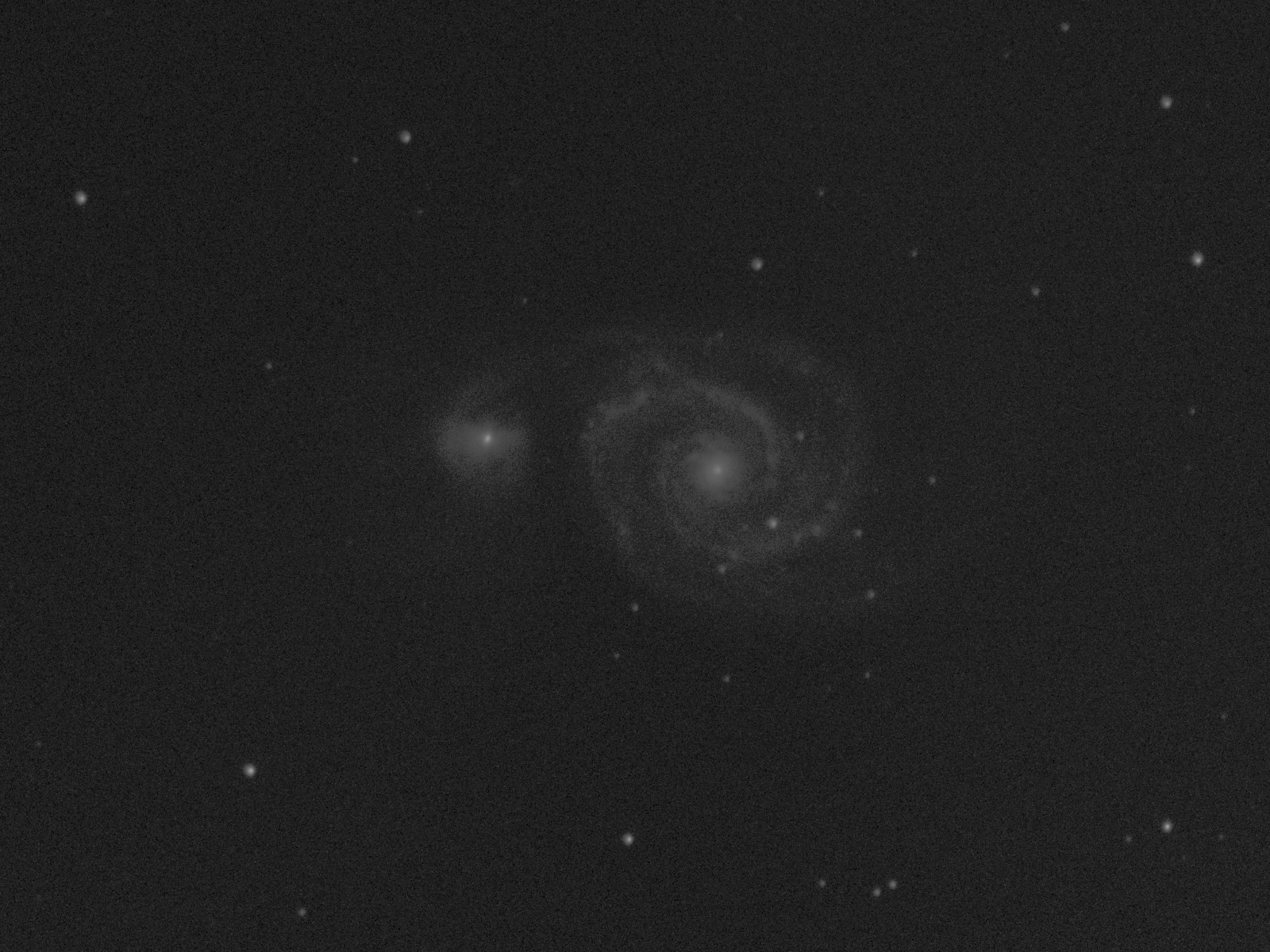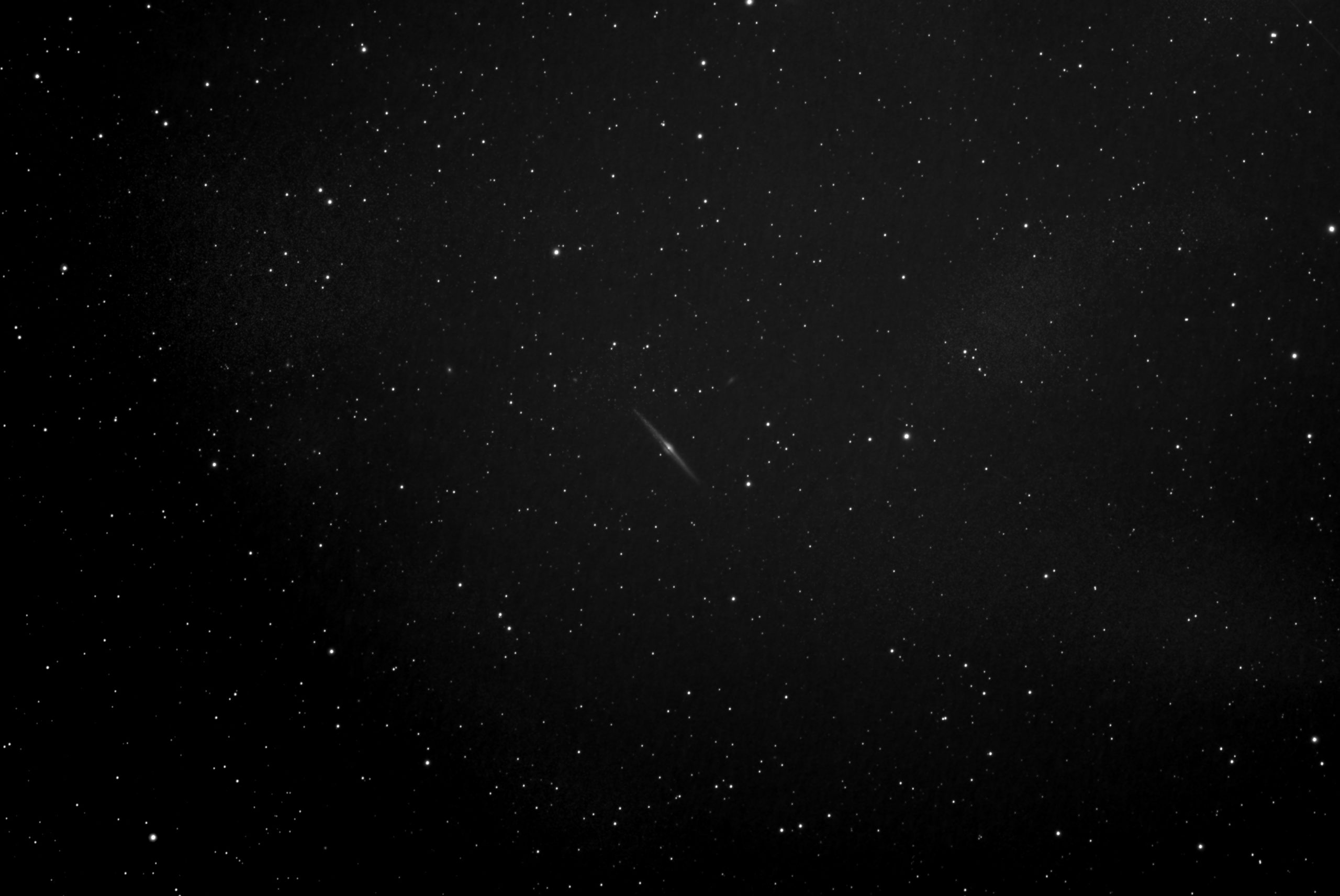
On my desktop monitor, the needle of NGC 4565 is quit clear, and if I expand the image I can clearly make out the dark lane across the galaxy. But on other systems, it is just too faint.
Still, pictures like these are a much more accurate representation of what the view is through even a fairly big amateur telescope. These objects are far away and small and dim, and that is part of the appeal.
